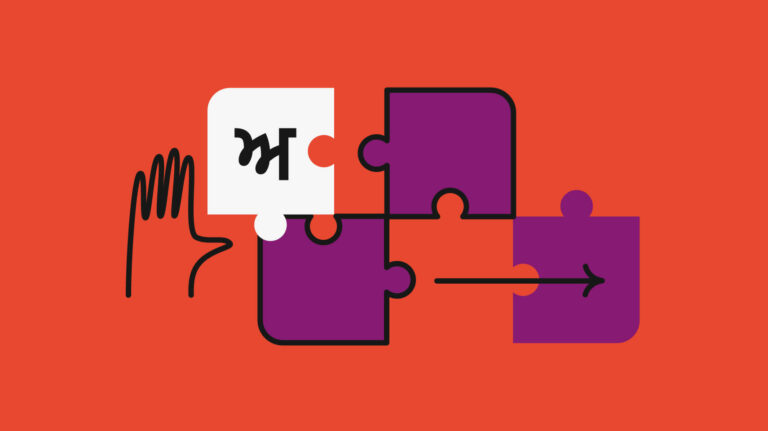Education With Problem Solving: Empowering Students to Think Critically
Education with problem solving emphasizes teaching students to understand new concepts through practical application, using real-world examples to develop critical thinking and analytical skills. Problem-solving in education promotes active learning and student-centered approaches, encouraging students to engage with topics by asking questions and thinking critically to find solutions.
The integration of problem-solving skills into the curriculum fosters an environment that challenges the mind, encouraging students to identify, analyze, and implement effective solutions to complex problems. This approach not only enhances cognitive abilities but also prepares students for real-life challenges and fosters creativity and innovation in learning.
Incorporating problem-solving into education empowers students to become independent thinkers and equips them with valuable life skills necessary for success in the future.
The Importance Of Problem Solving In Education
Challenging The Mind To Acquire New Knowledge
Problem solving is a critical skill that plays a vital role in education. It goes beyond classroom lessons and textbooks, challenging students to apply their knowledge to real-world situations. By solving problems, students are encouraged to think critically, analyze information, and generate innovative solutions. This process not only enhances their understanding of concepts but also enables them to acquire new knowledge. When students are actively engaged in problem-solving activities, they are more likely to retain information and develop a deeper understanding of the subject matter.
Making Learning More Student-centered
In traditional education models, the focus is often on rote memorization and regurgitation of information. However, problem solving shifts the focus to student-centered learning. Instead of passive recipients of knowledge, students become active participants in their own education. They are encouraged to explore different approaches, think creatively, and collaborate with their peers. This student-centered approach fosters a deeper level of engagement and ownership of learning outcomes. Students develop problem-solving skills that are transferable to various situations, preparing them for future challenges.
Incorporating problem-solving activities in education not only develops critical thinking, but it also nurtures creativity, decision-making, research skills, and active listening. By actively engaging in problem-solving tasks, students develop a problem-solving mindset that equips them with the ability to identify problems, brainstorm solutions, analyze their effectiveness, and adapt when necessary. This approach encourages students to be resilient, adaptable, and resourceful, essential skills for success in the modern world. Furthermore, problem solving empowers students to take ownership of their learning, fostering independence and self-motivation.
By embracing the importance of problem solving in education, we can create a generation of lifelong learners who are equipped with the skills and mindset necessary to face the challenges of the future.

Credit: www.studentachievementsolutions.com
Teaching Problem Solving Skills
Incorporating problem-solving skills into education allows students to actively engage with topics and think critically about solutions, making learning more student-centered. By providing real-world examples and practical applications, the problem-solving method of teaching helps students understand new concepts in action.
Incorporating Problem-solving Into The Curriculum
Introducing problem-solving skills into the curriculum is essential for nurturing students’ ability to tackle real-world challenges. By integrating problem-solving activities across various subjects, students are encouraged to apply critical thinking and analytical skills to arrive at solutions. Whether it’s through math problems, science experiments, or even language arts scenarios, fostering a problem-solving mindset within the curriculum empowers students with the practical skills needed for success in the workforce and beyond.
Encouraging Critical Thinking And Problem-solving Skills
Encouraging critical thinking and problem-solving skills in the classroom setting involves creating an environment that stimulates curiosity and exploration. Teachers can promote these skills by presenting open-ended questions, facilitating group discussions, and assigning complex problems that require innovative solutions. By establishing an atmosphere that values inquiry and experimentation, educators can effectively foster the development of critical thinking and problem-solving skills within their students.
Methods For Problem Solving In Education
When it comes to education, problem-solving skills are essential for students to develop as they navigate through various academic and real-world challenges. Implementing effective methods for problem solving in education is crucial in preparing students for future success. Let’s explore some key methods and examples of problem-solving skills in education:
The Problem Solving Method Of Teaching
The problem solving method of teaching is a popular approach that fosters active learning by engaging students in real-world situations. By providing practical examples, this method enables students to understand new concepts by applying them in practical scenarios. This approach not only enhances their understanding but also encourages critical thinking and creative problem-solving skills.
Examples Of Problem-solving Skills
Problem-solving skills in education encompass critical thinking, creativity, decision-making, communication, research, and active listening. These skills enable students to identify, analyze, and implement effective solutions to various challenges they encounter in their academic journey and later in their professional lives.

Credit: www.linkedin.com
Implementing Problem Solving In The Classroom
Incorporating problem-solving in the classroom promotes student-centered learning by encouraging critical thinking and questioning. It allows students to understand concepts through real-world examples and practical applications, leading to a deeper understanding of the subject matter.
Having Students Work Through Problems On Their Own
One effective way to implement problem solving in the classroom is by encouraging students to work through problems on their own. This allows them to develop critical thinking skills and become independent learners. By giving students the opportunity to tackle problems independently, you are empowering them to take ownership of their learning process.
Using Directing Questions And Minimal Assistance
Another strategy for implementing problem solving in the classroom is by using directing questions and providing minimal assistance. Instead of giving students the answers right away, ask them thoughtful questions that guide them towards finding the solution themselves. This approach promotes active learning and fosters a deeper understanding of the problem at hand.
By minimizing assistance, you are encouraging students to think critically, analyze the problem, and develop their problem-solving skills. This approach not only helps students become better problem solvers but also enhances their overall learning experience.
The Role Of Problem-solving Conferences
The Role of Problem-Solving Conferences – Education With Problem
Problem-solving conferences play a crucial role in education as they provide a platform for students and educators to address challenges, find solutions, and foster a collaborative learning environment. These conferences allow for open communication, creativity, and critical thinking to flourish, empowering students to become active participants in their education. Let’s explore how establishing the purpose of the conference and setting goals with the student can ensure a successful problem-solving conference.
Establishing The Purpose Of The Conference
When it comes to problem-solving conferences, it is essential to establish a clear purpose. The purpose sets the tone and direction of the conference, ensuring that everyone is on the same page and working towards a common goal. By defining the purpose at the outset, educators can guide the conversation, making it more focused, productive, and beneficial for all participants.
Setting Goals With The Student
To maximize the effectiveness of a problem-solving conference, it is crucial to involve the student in goal-setting. By including the student in the process, educators empower them to take ownership of their learning and develop a sense of responsibility. Collaboratively setting goals allows educators to understand the student’s perspective, strengths, and areas for improvement, enabling them to tailor the conference to the student’s specific needs and challenges.
During the goal-setting process, it is vital to establish SMART goals – specific, measurable, achievable, relevant, and time-bound. These goals provide a clear framework for both educators and students to track progress and evaluate the success of the problem-solving conference. By setting SMART goals, educators and students can work together towards meaningful and attainable outcomes, fostering a sense of accomplishment and motivation.
Moreover, goal-setting with the student encourages active participation and engagement during the conference. Students feel heard, valued, and empowered, which enhances their problem-solving skills and promotes a positive learning experience. Creating an environment where students have a voice in the goal-setting process cultivates a sense of agency, independence, and self-confidence.
In conclusion, problem-solving conferences in education are valuable opportunities for students and educators to collaborate, find solutions, and enhance learning outcomes. By establishing the purpose of the conference and setting goals with the student, these conferences become a platform for open communication, goal-oriented discussions, and fostering a growth mindset. Implementing problem-solving conferences in educational settings empowers students to become critical thinkers and lifelong learners.

Credit: kingsschools.org
Conclusion
Problem solving is an essential skill in education as it enables students to think critically, analyze situations, and develop innovative solutions. By incorporating problem solving into the curriculum, students are encouraged to engage actively with the subject matter, ask questions, and explore different perspectives.
This approach helps them understand how to apply theoretical knowledge to real-world situations, promoting deeper learning and problem-solving abilities that are crucial in today’s ever-changing world. By nurturing problem-solving skills, education becomes more student-centered, empowering learners to become independent thinkers and problem solvers.






